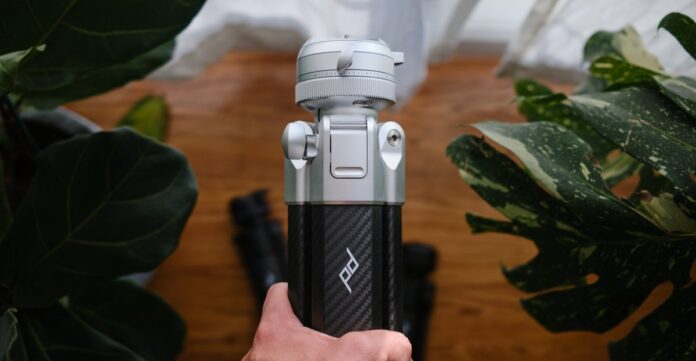Introduction to Peak Design’s New Tripods
Peak Design has released a new line of video tripods, and as with any new product from the company, there’s a lot of excitement around the genius engineering tweaks that have gone into these tripods. The new tripods are an improvement over the company’s first tripod release over six years ago, with sturdier legs, an improved center column, a redesigned ball head, and many other improvements.
The Tripod Lineup
There are three variants to choose from: the Pro Lite, Pro, and Pro Tall, all of which share the same core features but differ in max height and weight. The whole lineup of tripods is available on Kickstarter, with prices starting at $799 for the Pro Lite, $899 for the Pro, and $999 for the Pro Tall. Discounts for backing them on Kickstarter range from 23 percent off the Pro Lite to 27 percent off the Pro and Pro Tall.
Testing the Tripods
I had the chance to test all three tripods over a few weeks. The Pro Lite is the lightest model, weighing 3.7 lbs, and is easy to carry around. The Pro and Pro Tall are heavier and taller, with a larger weight load than the Pro Lite. I mostly used the Pro and Pro Tall tripods indoors, adding things like sliders and my heavier cinema cameras rig.
Features and Improvements
Each tripod is made from carbon fiber, and the ball head has a new quick-release system that feels much more secure than the one found on the Travel Tripod. The camera easily snaps onto the Arca-Swiss compatible plate, and there’s a separate locking mechanism flush against the side of the ball head. This lock, which the Travel Tripod didn’t have, made me more confident that I wouldn’t accidentally release it and drop the camera by bumping into a tightening knob.
The Ball Head
The ball head panning was smooth, but there aren’t friction adjustments. It’s either unlocked or not, but it was able to handle my mirrorless Fujifilm XH2s and even my heavier cameras like the Canon C70 well. However, you’ll need a separate $149 (MSRP) attachment if you want to add tilting capabilities.
Tilt Module
I assume most readers will be interested in the tilt module, which is both a good and bad thing. On one hand, it’s annoying to pay extra for this accessory, and I wish it came with the tripod. On the other hand, I like that you don’t have to pay the added cost if you don’t plan to use it. One possible workaround is to use an L-bracket on your camera, flip the ball head for vertical filming, and your built-in pan axis now becomes a tilt one.
Other Improvements
There are lots of smaller improvements, including better leg locks, sturdier concave center columns, a hidden hex tool, and an easier way to disassemble and clean parts. Even the carrying bag is roomier; it’s not a very tight-fitting sock like before.
Conclusion
But are the new tripods worth the price? It depends on how you use your video tripods. Over the last few years, with better camera and lens stabilization, my need for video tripods has slowly diminished. During my review period, I ended up using the Pro Lite tripod more often as a photo tripod than a video tripod, and it slowly replaced my original Travel Tripod. While the other two in the lineup stayed in my studio for video work. But each of the new tripods addresses every pain point of the original Travel Tripod, making them a great option for those in the market for a new tripod.

